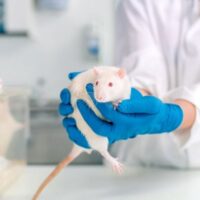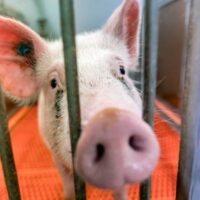In recent years, 3D printers have revolutionized the world. What many people may not know is that with this innovative device, it’s also possible to mimic human organs. Scientists have found a way to use human cells in printing, and this is known as 3D-bioprinting.
What exactly is 3D-bioprinting? In this article, you’ll learn all about this groundbreaking technology and how it can replace animal testing in medical research.
What is 3D-bioprinting?
More and more households, schools, and businesses have one: the 3D printer. This innovative device can print all sorts of things by building it up layer by layer. Typically, this is done with plastic, but did you know it can also be done with human cells? By using bio-ink, scientists have discovered a way to 3D print a human organ. Bio-ink is a mixture of materials that mimic the natural environment in which human cells grow. This material can be cultured from, for example, human skin cells. This means there is no harm to animals or humans involved.
This new technology involves three steps: pre-bioprinting, bioprinting, and post-bioprinting.
- Pre-bioprinting: First a model of the organ is created. For example, an MRI scan of a kidney can be made. Then, the biological materials that will be used for printing are chosen, and cells from the patient’s own organ are taken.
- Bioprinting: 3D printing human cells and tissues is no small feat. The cells must be able to grow and function just like normal human cells. That’s why, in this phase, bio-ink is created by mixing human cells with substances that mimic the natural environment of human cells. The mixture is then placed in a printer cartridge, and printing can begin! This is generally done layer by layer to create three-dimensional structures.
- Post-bioprinting: In this final stage, the bioprint is transferred to a cultivation chamber, turning the result into a stable printed organ.

Reducing animal testing with 3D-bioprinting
3D-bioprinting has the potential to reduce animal testing in medical research and to improve surgical procedures. Medication always needs to be tested for safety, and surgeries need to be practiced in advance. Currently, a significant number of animals are used for these purposes, but with 3D-printed organs, this could become a thing of the past.
Making research more personal with 3D-bioprinting
It’s not just animals that benefit from 3D bioprinting. This innovative technology can also make a big difference for humans. With 3D-bioprinting, scientists can develop personalized tissues and organs. This has the potential to help many patients. For example, damaged tissue from a medical procedure such as heart valve replacement, could be immediately repaired with printed tissue based on the patient’s own cells. How amazing is that?
Additionally, medications can be tested much more efficiently on printed human material. Medications developed through animal testing are often unsafe for humans in 9 out of 10 cases. This is logical, as animals are not humans.
Addressing the organ donor shortage
Hopefully, 3D bioprinting can also be used to address the shortage of human organs available for donation. There is a significant shortage of human organs for donation worldwide. Many patients in the Netherlands are on waiting lists for organ transplantations and do not survive the wait. The solution to this problem has been sought in animals. For example, in 2022 a pig’s heart was transplanted into a human patient. Unfortunately, the patient ultimately succumbed to complications.
As far as we are concerned, using animals to solve human problems is not progress or innovation. How wonderful would it be if we could use 3D-bioprinting to create human organs suitable for transplantation instead?

